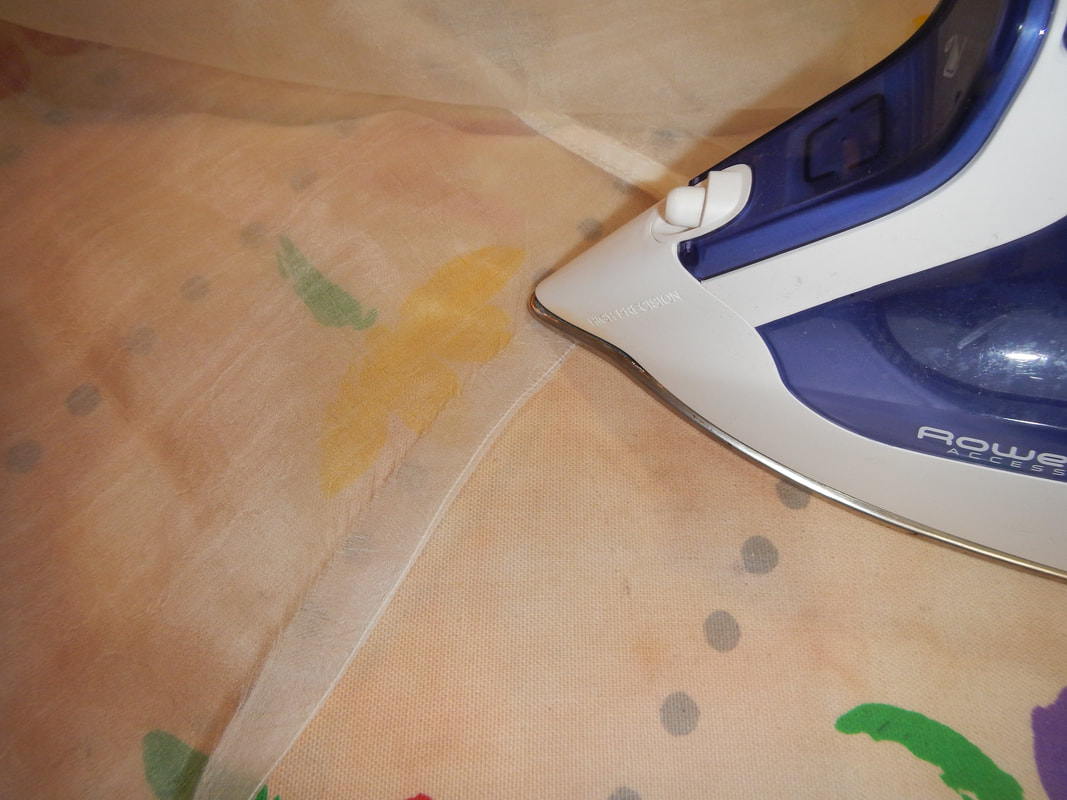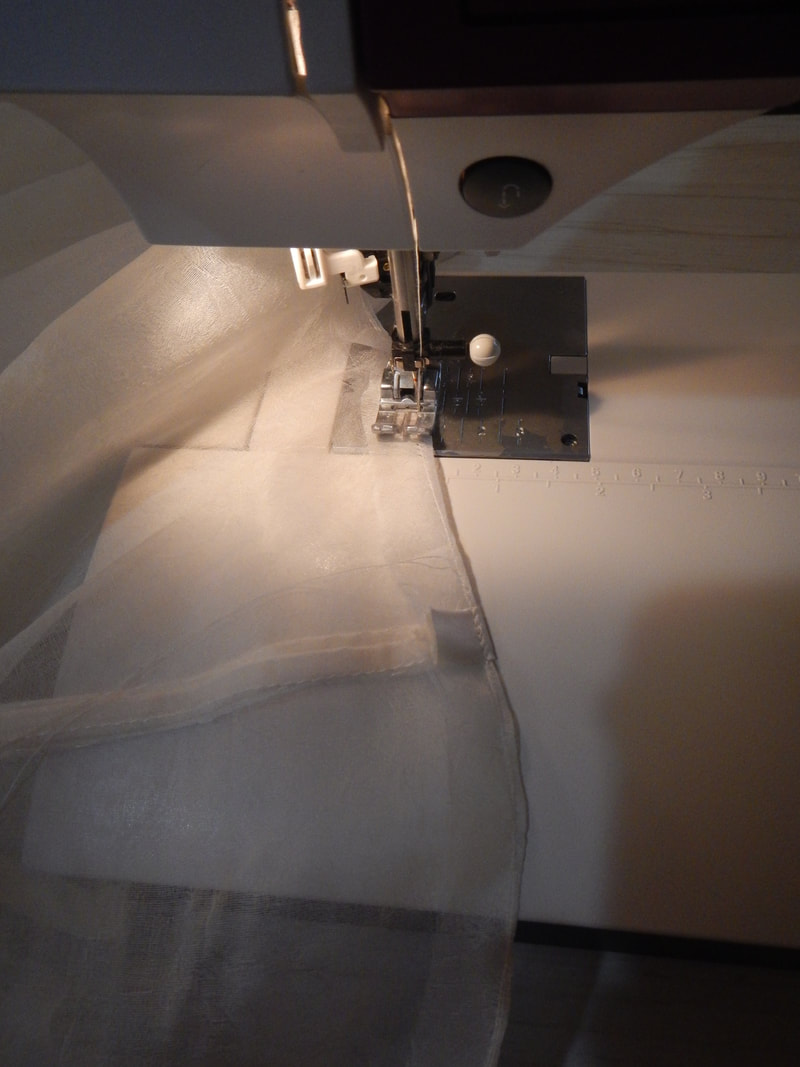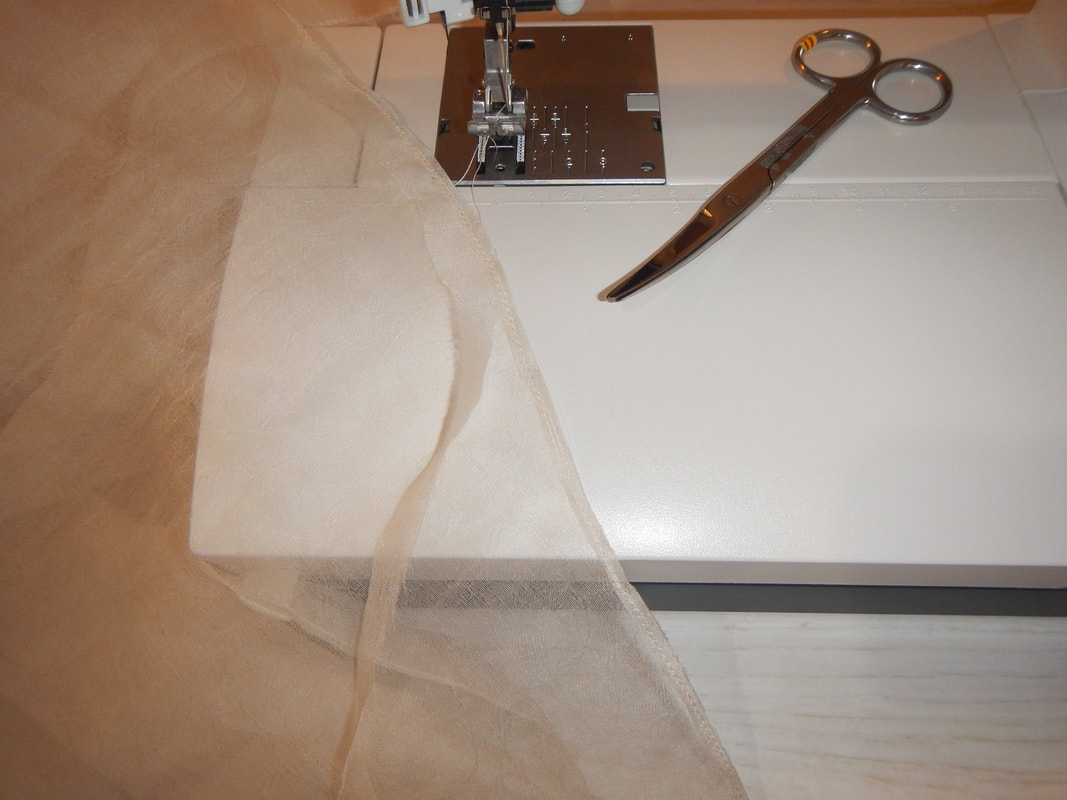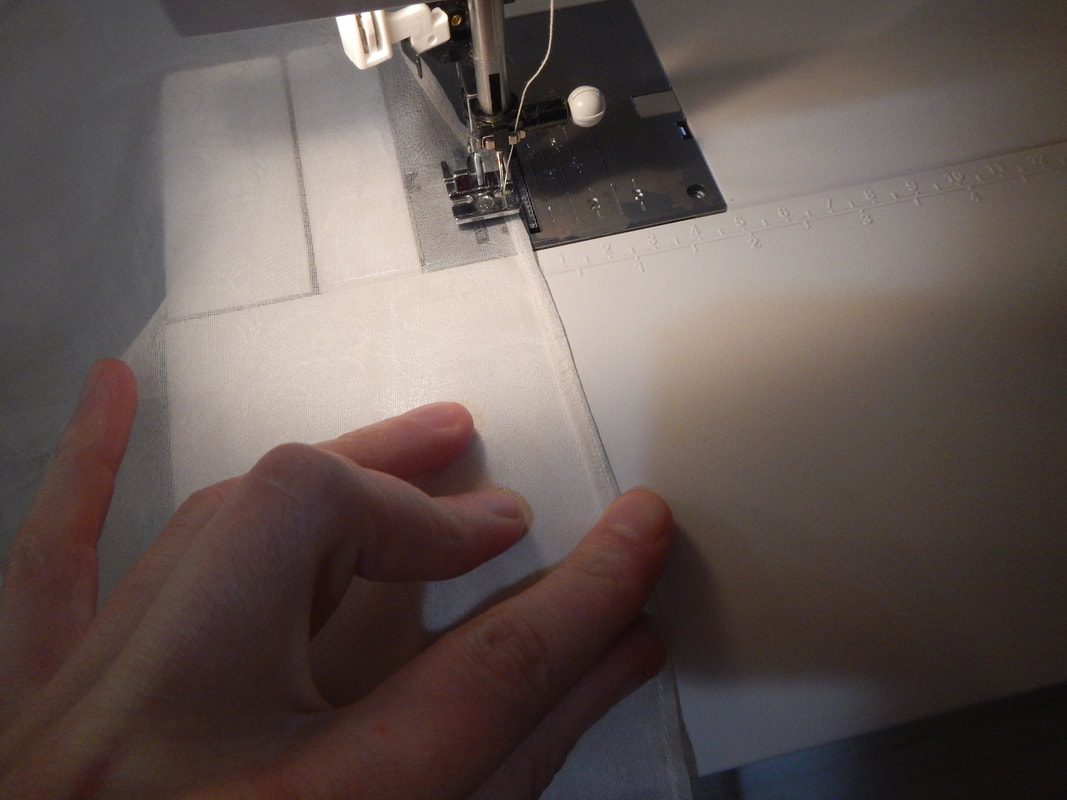|
Remember this from May 2017, my post about draping a peplum top? The hem of the peplum is a skinny Calvin Klein hem, so called because at one point Calvin Klein garments used it a lot, not because Calvin Klein invented it. (I'll do a tutorial soon on the Calvin Klein hem, since I'm rather fond of it.) Well, "soon" has become "today"! I was recently working on hemming a wedding dress, and decided to use the Calvin Klein hem for the sheer silk overlay. The biggest advantage, for me, is that the hem is thin and inconspicuous. It also looks professional, not Becky-Home-Ecky. I got some halfway decent photos, so here is the process in pictures! TUTORIAL: CALVIN KLEIN HEM
* I have also seen them called "medical bandage scissors", "embroidery scissors", and "cuticle" or "nose hair scissors"!
When you're done, press your hem. The Calvin Klein hem works well on sheers, thin fabrics, and even quilting cottons, when you want the hem to hang smoothly (no ruffly lettuce effect). The heavier the fabric, obviously, the bulkier the hem; I'd stick with lightweight fabrics. Also, the heavier the fabric, the more space you'll use in each turn, so start a little further from the creased hemline if your fabric is thicker. This technique also works best on straight hems or gentle curves; if the curves are too sharp, you'll have either buckling and bunching (depending on whether the curve is concave or convex) when you turn the hem up.
0 Comments
Leave a Reply. |
Karen Roy
Quilting, dressmaking, and history plied with the needle... Sites I EnjoyThe Quilt Index Categories
All
Archives
March 2024
|





 RSS Feed
RSS Feed